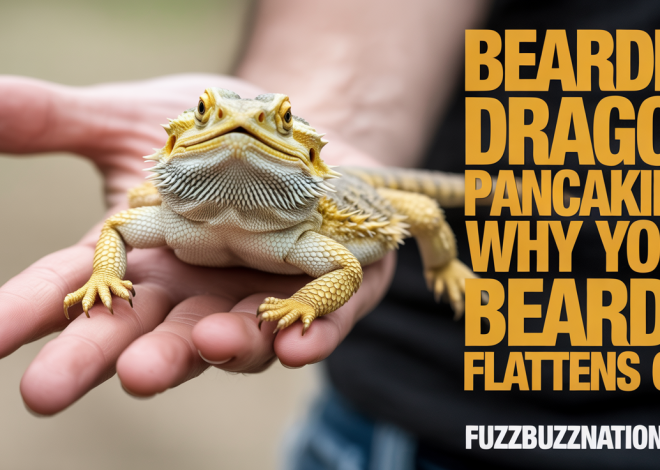
Kenyan Sand Boa Care: Complete Beginner-Friendly Snake Guide
Kenyan sand boas (Gongylophis colubrinus) are excellent beginner snakes requiring minimal space with adults thriving in 20-gallon enclosures, simple heating setups maintaining 90°F hot spots, and loose substrate for their natural burrowing behavior. After successfully keeping and breeding Kenyan sand boas for over thirteen years, including maintaining multiple breeding groups and raising hundreds of offspring, I’ve learned that these docile, hardy snakes combine ease of care with fascinating behaviors, making them ideal first snakes for responsible owners willing to respect their preference for minimal handling and provide appropriate husbandry.
The key to successful Kenyan sand boa keeping lies in understanding their fossorial (burrowing) lifestyle that differs from typical pet snakes, providing adequate substrate depth for natural behaviors, and recognizing that their sedentary nature means they’re observation pets rather than interactive animals like some larger snake species.
Understanding Kenyan Sand Boa Natural History and Behavior
Kenyan sand boas inhabit arid and semi-arid regions of East Africa, spending most of their time buried in sandy or loose soil with only their eyes and nostrils exposed while ambushing prey.
These small, stocky snakes reach 15-24 inches in length at maturity, with females growing larger than males and displaying more robust body builds suitable for egg production.
During my breeding projects, I’ve observed that Kenyan sand boas display remarkable docility, rarely biting even when handled during cleaning or health inspections, making them exceptionally safe for beginners.
Their blunt, wedge-shaped heads facilitate burrowing through substrate, while their smooth scales reduce friction during underground movement through their natural sandy habitats.
Natural coloration ranges from yellow to orange with dark brown saddles, though selective breeding has produced various morphs including albino, anerythristic, paradox, and numerous pattern variations.
Activity patterns peak during evening and nighttime hours when these crepuscular hunters emerge to patrol for small rodents, though captive animals adapt to feeding schedules regardless of time.
Lifespan potential reaches 20-30 years with proper care, making Kenyan sand boas long-term commitments requiring decades of consistent husbandry and veterinary attention.
Essential Housing Requirements
Adult Kenyan sand boas thrive in 20-gallon long aquariums providing adequate floor space for thermoregulation while maintaining manageable size for cleaning and monitoring.
I house my breeding adults individually in enclosures measuring 30″x12″x12″, finding this size optimal for adult comfort while preventing the stress of cohabitation outside breeding attempts.
Juveniles do well in smaller containers including 10-gallon tanks or appropriately sized plastic tubs that make them feel secure while reducing the stress of excessive space.
Substrate depth represents the most critical housing element, requiring 3-4 inches of loose material allowing complete burial and natural burrowing behaviors essential for psychological well-being.
Aspen shavings work excellently for Kenyan sand boas, providing appropriate texture for burrowing while maintaining low humidity levels these desert species require for respiratory health.
I avoid sand despite the species’ common name, as fine sand can cause impaction if ingested during feeding and doesn’t maintain burrow structure as well as shavings.
Cage furniture should include at least one hide on the cool end providing surface-level security for snakes that occasionally rest above substrate level.
Water bowls must be heavy enough to resist tipping yet shallow enough that burrowing activities won’t bury them completely, requiring daily checks for accessibility.
Temperature and Heating Management
Temperature gradients require hot spots of 90-95°F with cool ends around 75-80°F, allowing behavioral thermoregulation essential for digestion and overall health.
Under-tank heating pads placed under one-third of the enclosure bottom create appropriate heat gradients that penetrate substrate effectively for buried snakes.
I use thermostats with all heating equipment to prevent dangerous overheating that can occur with malfunctioning heat sources or inadequate monitoring systems.
Surface temperature monitoring with infrared thermometers helps verify that substrate surface temperatures in the hot spot remain appropriate without becoming dangerously hot.
Nighttime temperature drops to 70-75°F simulate natural cooling cycles, though Kenyan sand boas tolerate consistent temperatures if nighttime drops prove impractical.
Overhead heating through ceramic heat emitters or radiant heat panels works well but requires deeper substrate to prevent excessive drying of upper layers where snakes burrow.
Humidity Control and Considerations
Low humidity between 30-50% suits Kenyan sand boas’ desert origins, making them ideal for naturally dry climates where maintaining moisture proves challenging for other species.
I monitor humidity with digital hygrometers positioned at substrate level where snakes spend most time, as readings vary significantly between air and substrate layers.
Shedding periods require temporary humidity increases to 50-60% achieved through lightly misting one area of substrate or providing a humid hide with damp sphagnum moss.
During my years maintaining sand boas, I’ve observed that respiratory infections develop quickly in overly humid conditions, making moisture control critical for health.
Water bowl size and placement affect ambient humidity, with smaller bowls and positioning on the cool end preventing excessive moisture accumulation in the enclosure.
Ventilation through screen tops maintains appropriate air exchange that prevents stagnant conditions while allowing natural humidity levels for these arid-adapted snakes.
Feeding Requirements and Schedules
Kenyan sand boas are obligate carnivores requiring appropriately sized rodent prey, with adult meals typically consisting of adult mice or small rats depending on snake size.
I feed adults every 10-14 days, finding this schedule maintains healthy body condition without the obesity that develops from more frequent feeding common in captive snakes.
Prey size should equal the snake’s body width at its widest point, creating a visible but not excessive bulge after consumption that indicates appropriate portion sizing.
Frozen-thawed prey proves safer than live rodents, eliminating bite risks while being more convenient and economical for keepers maintaining multiple snakes.
Feeding responses in Kenyan sand boas can be tentative compared to aggressive feeders, requiring patience as snakes investigate prey before striking and constricting thoroughly.
Through breeding observations, I’ve noted that gravid females often refuse food during late pregnancy, requiring patience rather than force-feeding as they resume eating post-partum.
Separate feeding containers prevent substrate ingestion during strikes, though many keepers successfully feed in enclosures by removing prey after consumption or feeding on paper towels.
Handling Techniques and Temperament
Kenyan sand boas display exceptional docility, tolerating handling without defensive behaviors though their burrowing instinct means they constantly try to burrow into hands or sleeves.
I limit handling to 5-10 minutes once or twice weekly, as these sedentary snakes don’t require or benefit from extensive interaction like more active species.
Proper support involves allowing the snake to move between hands while supporting their body weight, preventing the grasping or restraining that causes stress in any snake.
New owners should wait 5-7 days after acquisition and 48 hours after feeding before initial handling, allowing snakes to settle and digest without stress.
During my handling experience with hundreds of sand boas, I’ve encountered only one defensive individual, with the vast majority remaining calm even during health inspections.
Children can safely handle Kenyan sand boas under supervision, though adults must teach gentle techniques and respect for animals that tolerate but don’t necessarily enjoy handling.
Common Health Issues and Prevention
Respiratory infections develop from excessive humidity or temperature fluctuations, manifesting as wheezing, mucus around nostrils, or open-mouth breathing requiring immediate veterinary attention.
I’ve successfully prevented respiratory problems through consistent humidity monitoring and proper heating, as these hardy snakes rarely develop illness in appropriate conditions.
Mites appear as tiny black or red dots moving on snakes or visible in water bowls, requiring treatment through appropriate miticides and thorough enclosure cleaning.
Inclusion body disease (IBD) affects boid species including sand boas, though captive-bred animals from reputable sources rarely carry this fatal viral condition.
Obesity represents the most common health problem in captive Kenyan sand boas due to overfeeding and lack of exercise, prevented through appropriate feeding schedules and portion control.
Shedding problems occur when humidity is inadequate during shed cycles, resulting in retained eye caps or incomplete sheds requiring humidity increases and sometimes veterinary assistance.
Burns develop when snakes contact heat sources directly, emphasizing the importance of thermostat use and appropriate heat source placement that prevents direct contact.
Breeding Considerations and Reproduction
Sexual maturity occurs around 18-24 months for males and 2-3 years for females, with weight being more important than age in determining breeding readiness.
Cooling periods from November through February with temperatures dropping to 70-75°F stimulate breeding behavior when snakes are warmed and introduced in spring months.
I introduce males to female enclosures for breeding attempts, monitoring for mating behavior including male chin-rubbing and copulation that can last several hours.
Gestation lasts approximately 4 months, with gravid females showing obvious mid-body swelling and often refusing food during the final 4-6 weeks before giving birth.
Kenyan sand boas are viviparous, giving birth to 5-20 live young measuring 6-8 inches, with larger females producing larger litters than smaller first-time mothers.
Neonates require housing in small containers with paper towel substrate initially, graduating to aspen shavings after their first shed around 7-10 days post-birth.
Baby care involves feeding pinkie mice weekly and maintaining appropriate temperatures in compact enclosures that provide security without overwhelming newly independent snakes.
Color Morphs and Genetic Variations
Wild-type Kenyan sand boas display yellow to orange backgrounds with dark brown saddles, representing the natural coloration seen in East African populations.
Albino morphs lack melanin, displaying bright orange and white coloration that makes them popular among keepers wanting visually striking snakes.
Through my breeding projects, I’ve produced various morphs including anerythristic (lacking red pigment), striped, and paradox patterns showing unexpected color patches.
Splash patterns feature irregular splotching rather than clean saddles, while dodoma morphs show distinctive head patterns differentiating them from standard localities.
Nuclear morphs combine multiple genetic traits creating unique appearances, though basic morphs remain most affordable and readily available for beginning keepers.
Morph prices vary dramatically from $50-100 for normal animals to $200-500+ for rare genetic combinations, with show-quality breeding stock commanding premium prices.
Species Comparison and Alternatives
Rosy boas share similar care requirements and docile temperaments, though they grow slightly larger and show different color patterns appealing to keepers wanting variation.
Ball pythons require larger enclosures and higher humidity than Kenyan sand boas, making sand boas better choices for keepers in dry climates or with limited space.
I’ve maintained both species simultaneously, finding sand boas more forgiving of husbandry errors and requiring less space than ball pythons while offering similar docility.
Corn snakes are more active and require taller enclosures for climbing, contrasting with sand boas’ sedentary, burrowing lifestyle appealing to different keeper preferences.
Western hognose snakes display similar size and substrate requirements but show more defensive behaviors and specialized feeding preferences requiring different husbandry approaches.
Cost Considerations and Long-Term Expenses
Initial setup costs typically range $150-300 including enclosure, heating equipment, substrate, hides, and water bowls necessary for proper Kenyan sand boa housing.
The snake itself costs $50-150 for normal morphs from reputable breeders, with rarer color variations commanding significantly higher prices based on genetics.
Monthly maintenance expenses average $10-20 covering substrate replacement, electricity for heating, and frozen rodent prey purchased in bulk for cost efficiency.
I’ve calculated lifetime ownership costs at approximately $3,000-5,000 over a 20-year lifespan including setup, routine expenses, and occasional veterinary care.
Veterinary services for exotic reptiles can be expensive and may require specialists, as many general veterinarians lack experience treating snakes.
Seasonal Care Adjustments
Summer heat management may require moving enclosures to cooler rooms or supplementing with fans if ambient temperatures make maintaining appropriate cool ends challenging.
Winter heating costs increase in cold climates, though Kenyan sand boas’ modest heating requirements keep electricity expenses reasonable compared to tropical species.
I implement cooling periods from November-February for breeding adults, reducing temperatures and photoperiod to stimulate reproductive behaviors upon warming in spring.
Feeding schedules may require adjustment during cooling periods, with snakes often refusing food during simulated winter despite being maintained at temperatures supporting digestion.
Humidity monitoring becomes more critical during summer when air conditioning can create excessively dry conditions even for desert-adapted species requiring some environmental moisture.
Legal Considerations and Acquisition
Kenyan sand boas face minimal legal restrictions in most jurisdictions, though some cities or rental properties prohibit snake ownership requiring verification before acquisition.
Reputable breeders provide health guarantees, feeding records, and ongoing support that pet stores typically cannot offer, making breeder sourcing preferable when possible.
I recommend attending reptile expos where multiple breeders showcase animals, allowing direct comparison of quality, health, and prices while supporting responsible breeding operations.
Online purchasing through established breeders with positive reviews provides convenience and access to specific morphs, though shipping costs add $40-80 to total purchase price.
Rescue organizations occasionally have Kenyan sand boas available for adoption, providing homes for unwanted animals though health histories may be unknown.
Common Beginner Mistakes to Avoid
Insufficient substrate depth prevents natural burrowing behaviors, creating stress and unnatural activity patterns in snakes adapted to spending most time underground.
Overhandling causes stress even in docile species, with some keepers treating snakes like interactive pets rather than observation animals that tolerate occasional handling.
I’ve observed many beginners cohabit sand boas to save space, but this creates feeding competition, stress, and potential aggression despite their generally peaceful nature.
Inadequate heating or lack of temperature gradients prevents proper thermoregulation, affecting digestion and overall health even in hardy species like Kenyan sand boas.
Oversized enclosures make juveniles feel insecure and can reduce feeding responses, though this is easily corrected by providing appropriately sized starter housing.
Advanced Husbandry Techniques
Naturalistic enclosures using mixed substrates, live plants, and natural décor create attractive displays while supporting natural behaviors, though they require more maintenance than simple setups.
Bioactive systems incorporating cleanup crews of isopods and springtails process waste naturally, reducing cleaning frequency while creating more complex, interesting environments.
I use rack systems for breeding operations housing multiple animals efficiently, though individual display enclosures better showcase these interesting snakes for pet keepers.
Quarantine protocols isolating new animals for 60-90 days prevent disease introduction to existing collections, making this essential practice for anyone maintaining multiple reptiles.
Record keeping including feeding logs, shed dates, and health observations helps identify patterns and problems early while providing valuable information for veterinary consultations.
Frequently Asked Questions
Are Kenyan sand boas good for first-time snake owners?
Yes, Kenyan sand boas are excellent beginner snakes due to their small size, simple care requirements, docile temperament, and forgiving nature regarding minor husbandry errors. They require less space than most snakes, tolerate handling well, and rarely bite even when defensive. Their primary drawback is their sedentary, burrowing lifestyle means they’re rarely visible, which may disappoint keepers wanting interactive or display animals. However, for responsible beginners wanting a hardy, manageable snake, they’re among the best choices available.
How often are Kenyan sand boas visible in their enclosures?
Kenyan sand boas spend 80-90% of their time buried in substrate with only eyes or nostrils exposed, making them infrequently visible compared to surface-dwelling snakes. They’re most active during evening hours and after feeding but quickly return to burrows. Some individuals are more outgoing than others, though expecting constant visibility will lead to disappointment. Consider them observation pets where spotting activity and natural behaviors provides rewards rather than continuous display animals.
Do Kenyan sand boas need UVB lighting?
No, Kenyan sand boas don’t require UVB lighting and thrive with ambient room light and their heat source. Some keepers provide low-level UVB believing it offers health benefits, though research supporting this for nocturnal, burrowing species is limited. Standard ambient lighting suffices, with natural day-night cycles supporting healthy circadian rhythms. Focus resources on proper heating and humidity control rather than lighting, as these factors significantly impact health more than UVB exposure.
Can I keep multiple Kenyan sand boas together?
While possible, I don’t recommend cohabitation except during breeding attempts. Even though sand boas are generally peaceful, housing together creates competition during feeding, potential stress from forced proximity, and risk of aggression during breeding season. Males housed together may fight, and larger individuals may eat smaller cage mates. The modest space requirements make individual housing practical and safer for all animals, eliminating cohabitation risks without significant space or cost increases.
What temperature should I keep my Kenyan sand boa at night?
Nighttime temperatures can safely drop to 70-75°F, simulating natural desert cooling cycles. If maintaining this temperature drop proves impractical, consistent temperatures in the low 80s work fine for most situations. The key is providing a temperature gradient during active periods rather than precise nighttime temperatures. Some keepers turn off supplemental heating completely at night, relying on ambient room temperatures, though this depends on your climate and home heating systems.
Building Long-Term Success with Kenyan Sand Boas
Successful Kenyan sand boa keeping requires accepting their burrowing nature and appreciating brief sightings and natural behaviors rather than expecting constant visibility or interaction.
Consistent husbandry including appropriate temperatures, adequate substrate depth, and regular feeding schedules proves more important than elaborate setups or expensive equipment.
Building relationships with experienced reptile veterinarians before emergencies ensures access to appropriate care when health problems develop despite excellent husbandry efforts.
Joining sand boa and small snake communities provides support, breeding opportunities, and continued learning about these fascinating animals throughout their long lifespans.
Remember that these hardy, docile snakes reward proper care with decades of companionship, making them ideal long-term reptile pets for keepers who appreciate their unique fossorial lifestyle and straightforward care requirements.


